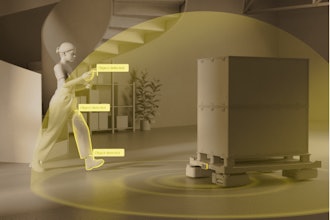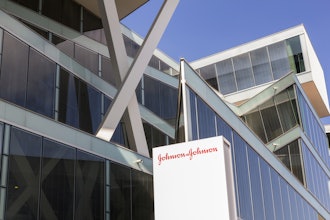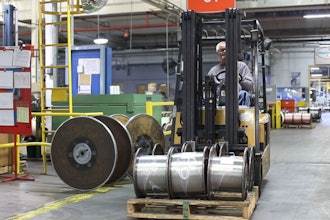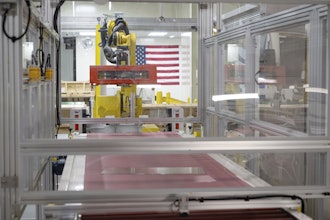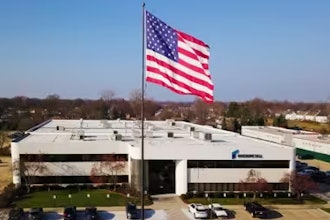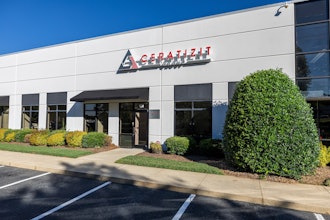Excellence in labeling has always provided a competitive advantage in the business of manufacturing, but today the amount of critical data that needs to be printed on a barcode label far surpasses what was considered to be sufficient in the past. From identification to grouping, shipping, locating and tracking products that flow upstream and downstream in the supply chain, there is a great deal of information, often in multiple languages, that needs to be included on a “simple” label. There are changing customer label requirements and even, in some cases, regional standards and regulatory information to include. In fact, in the current manufacturing environment, labels are far from “simple.” Global manufacturers are beginning to understand that labeling solutions need to accommodate an increased level of complexity, whether in creating a 1D or 2D symbologies, by including languages, regulatory information, pictograms, lot and batch number, brand information, and more. The question is, what is the best strategy for accommodating this level of labeling complexity in the global supply chain?
The cost of not reassessing the demands of “new” supply chain labeling can be high. Mislabeling, inefficient offline labeling processes, a myriad of redundant and unnecessary label designs, and poor integration of multiple labeling data sources can add up to wasted labor resources, customer fines, returns, delayed shipments, and even loss of business.
Utilizing enterprise labeling solutions can enable companies to address complex labeling challenges while improving efficiency, accuracy and speed, as well as delivery time and cost savings. Overall labeling quality improvements can dramatically improve a manufacturer’s competitive edge in the global marketplace. Here are seven reasons why enterprise labeling is the most intelligent labeling strategy for improving and optimizing the flow of goods across the global supply chain.
1. SPEED. The Manufacturing Industry is retooling with new technologies and automating at unprecedented speed. Labeling solutions must keep up.
Enterprise labeling provides manufacturers with the ability to dynamically manage labeling and support the extensive variability brought on by the global complexity of products, new automation technologies, customer requirements, geographies, languages, and standards. Implementing Enterprise Labeling empowers business users to make rapid labeling changes without requiring custom development or waiting for software release cycles.
Changes and updates can be made in hours or days rather than months to meet critical business deadlines. By automating labeling on an enterprise-wide basis, manual effort is minimized, throughput increases and response time improves. Companies get the flexibility and scalability to meet production requirements seamlessly and dynamically with enterprise labeling solutions.
2. STANDARDIZATION. Standardize labeling across the global supply chain for labeling consistency and seamless IT oversight. Standardization of labeling throughout the supply chain solves a multitude of problems, preventing mislabeling, relabeling, and more — regardless of the number of global locations.
As supply chains become more interconnected and complex, businesses are adopting standards for enterprise applications across their global footprint. Today’s labeling solutions must provide the ability to integrate with existing data sources and enable standardization for a consistent approach to labeling. Solutions must support this type of flexibility and performance without demanding extensive coding or customization.
And what a discovery to realize that standardization actually allows for much more flexibility for addressing labeling, enabling you to leverage centralized data sources throughout your supply chain operations. With Enterprise Labeling, a wide variety of labeling demands can be accommodated seamlessly across the global supply chain.
3. CUSTOMER RESPONSIVENESS. Proactively and rapidly meet customer requirements to gain a competitive edge. Enable companies to maximize operational efficiency and meet business requirements. Stay one step ahead of what customers want.
Changes to labels are often driven by customer-specific requirements that are more demanding and variable today than ever before. Failing to meet requirements in a timely fashion results in dissatisfied customers who may turn to competitors. Businesses which view labeling as a key enabler in customer responsiveness find increased opportunities to better serve their client base and drive revenue.
Today, companies need to manage variability across multiple customer segments and regions to meet the rigors of the customers’ global requirements, including variability in languages, images, formats and printers. Enterprise labeling can proactively and quickly accommodate the widest range of customer requests.
4. CHANGE MANAGEMENT. In today’s global economy, the only thing that does not change is change itself. When change is the norm, the power of enterprise labeling wins the day. Manage changes on a large scale swiftly and easily.
Companies faced with unpredictable business requirements can make label changes with the advanced business logic contained in enterprise labeling solutions. Label formatting and content can be changed dynamically to support a myriad of different label combinations with a minimum number of label designs. A wide range of regional, language, customer and regulatory requirements can be modified as needed, while enabling the automatic routing of print requests.
Users can easily configure business rules to redefine labeling to support the new requirements. An enterprise labeling solution with configurable business rules remove a significant burden and expense from IT, eliminating the need to maintain custom code or manage a staggering number of label designs. Changes and updates can be made in hours.
5. COST MANAGEMENT AND MARGIN MAXIMIZATION. Labeling tangibly improves your bottom line and helps grow your topline, too. Experience how an efficient, enterprise-wide labeling solution can positively impact your growth strategy for the best outcomes.
According to industry analysts at VDC, a manufacturing research firm, enterprises are streamlining the flow of products and information across channel, network and organizational boundaries to create a flexible and competent demand-driven supply chain — and they are also meeting their profitability objectives. Seventy-three percent of organizations surveyed by VDC cite operations improvement and cost savings as leading barcode technology investment criteria.
Essential functionality in today’s solutions include certified integration capabilities to allow companies to automate their labeling process, directly leverage sources of truth for label data, and avoid mislabeling issues which cost businesses time and money. Keeping customers happy with timely labeling changes to meet their requirements supports retention and can definitely lead to both short-term savings and long-term profitable growth.
6. STANDARDS AND REGULATIONS COMPLIANCE. Industry standards and regulations are increasing in the global marketplace. Don’t bet on a regulation-free marketplace.
OSHA (Occupational Safety and Health Administration), GHS (Globally Harmonized System) as applied to various markets, RoHS2 (Restriction of Hazardous Substances, Second Revision) for electronics, and other regulations may affect your labeling processes more than you think. In a recent survey, 65 percent of those polled listed Customer Specific & Regulatory Requirements as a top labeling challenge today. Manufacturing organizations are often surprised to find that some aspect of their product or shipping process is much more regulated than they knew, and are obliged to scramble to find a way to address labeling regulations. Or worse, not being ready with labeling that includes compliance to regulations and standards can result in lost business.
In the 2014 Enterprise Labeling Survey, which polled nearly 400 supply chain professionals, half of all companies with revenue greater than $1 Billion indicated they have regulatory and compliance labeling requirements. Adhering to regulations that define how products are developed, marketed, shipped and disposed of is essential to avoid fines, retain customers, enter new markets, and in some cases, remain in business.
7. BEST PRACTICES. Planning for high availability, disaster recovery, failover, and a structured path to production are important aspects of a “best practices” program.
Enterprise Labeling is all about the kind of flexibility that makes for planning and execution of labeling in extreme manufacturing environments so much easier than ever before. Natural and man-made disasters — whether storms, floods, fires, or geopolitical unrest — can wreak havoc with a company’s supply chain and have significant financial consequences. Companies that include manufacturing and distribution facilities around the globe need to ensure continuous flow of goods from suppliers and partners to customers without interruption. However, when it comes to business continuity, companies most often think about manufacturing and shipping, but frequently overlook an essential element — labeling.
Companies must be able to shift label production from one facility to another rapidly, while leveraging the correct data in order to keep the supply chain flowing. Altogether, best practices need to be identified and communicated throughout the supply chain. Enterprise labeling solutions are, in effect, a key disseminator of best practices within a global supply chain.
In conclusion, a label is much more than it may first appear to be. Labeling actually reflects the intentions and best practices of an organization’s commitment to its global marketplace. With a labeling strategy firmly in place that is scalable in the enterprise, the opportunities for greater efficiency in managing the global supply chain can be seamlessly addressed on multiple levels for continuous improvement and enterprise excellence — for increased speed, better accuracy, opportunities for real cost savings, improved customer satisfaction, and enabling easier compliance with labeling regulations as necessary — benefitting all manufacturing global supply chain stakeholders in the process.
Deborah Grant is Manufacturing Industry Manager at Loftware which offers the Loftware Enterprise Labeling Solutions.
ALSO READ: Visibility In The Inbound Supply Chain










